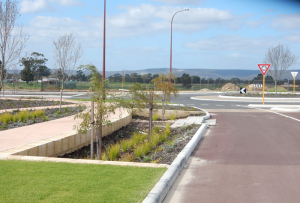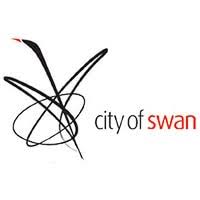Finding the balance between water quality treatment and public open space
Project aims:
- to provide an evidence based understanding of the land take efficiency and water quality treatment efficacy of at-source and end-of-pipe water quality systems
- to determine criteria an assessment processes which facilitate optimal sizing of water quality treatment systems embedded within public open space that achieve water quality objectives and community enjoyment of the space.
Project progress:
Completed in 2018
Project delivery:
The findings of the report are based on a four-stage assessment which included:
- Tour of potential sites and selection of case studies
- Case study review of ‘as constructed’ sites to identify key policy or practice drivers, criteria and outcomes
- Detailed modelling of final designs and testing of parameters
- Multi-criteria analysis and reporting
Each local government selected three sites for detailed review which provided a cross section of landscapes and issues for review.
 Project outcomes:
Project outcomes:
The modelling and multi-criteria assessment has demonstrated that significant improvements can be made to the functionality of public open spaces by placing a greater emphasis on the role and function of each space, coupled with the application of less conservative modelling approached and design criteria. Benefits to areas of public open space are demonstrated as:
- improved land use efficiency;
- lower maintenance costs and generally lower construction costs;
- improved park functionality including areas for recreation; and
- maintenance of water quality outcomes with a reduction in vegetated ‘wet’ areas.
It is therefore recommended that consideration is given to the following actions:
- Provide clear objectives for public open space and guidance on where compromises can be made. Require water reports to respond to the objectives and discuss with the Parks team. Parks and engineering to work together to optimise outcomes.
- Ensure the review of concepts and designs by the City is undertaken in a collaborative way which includes engineering, landscape, parks and asset management.
- Review application of design parameters and provide guidance on the adoption and use of initial losses, runoff coefficients and infiltration rates, recognising that conservatism in parameters has cumulative effects.
- Encourage early consultation with industry and promote flexible application of criteria in order to optimise outcomes. Ensure design responses are site specific and are not just based on a strategy that was approved previously.
- Support strategies which distribute water through-out the catchment to reduce the need for large treatment areas and locate these preferentially in proximity to sensitive receiving environments.
Project partner:
We would like to thank the following organisation for their valuable input and commitment to the project:

Please click here if you are interested in hearing more about this project or getting involved.
